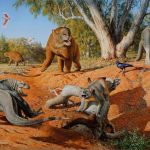Oldest Ancient-Human DNA Details Dawn of Neandertals0
- Ancient Archeology, From Around the Web
- February 23, 2017
Sequence of 430,000-year-old DNA pushes back divergence of humans and Neandertals

Sequence of 430,000-year-old DNA pushes back divergence of humans and Neandertals

Puma Punku is a place where one loses the notion of space and time. This temple complex located near Tiwanaku, Bolivia is one of the most incredible ancient ruins you will find in South America.

Puma Punku is truly a wonderful Place, not only is it an incredible temple complex filled with mysteries that baffle one’s mind, it is a place where one loses the notion of space and time. This temple complex located near Tiwanaku, Bolivia is one of the most incredible ancient ruins you will find in South America.

A stone embedded with a three-pronged plug could be either evidence for a technologically advanced ancient civilization or a hoax.

Researchers have discovered the earliest known ancestor of humans – along with a vast range of other species.

Dr Tom Harvey from the Department of Geology, University of Leicester, together with Professor Nicholas Butterfield, University of Cambridge, discovered the new species while conducting a survey of microfossils in mudstones from western Canada.

Mysterious dome ‘building’ may have been created by an ancient civilisation, bizarre theory claims

The 100-million-year-old remains of an alien-looking female insect — complete with a triangular head and bulging eyes — have been discovered encased in a glob of hardened resin called amber.

Research team working in Ceibal-Petexbatun Archaeological Project and led by Takeshi Inomata of the University of Arizona, have studied both collapses of Maya civilization at Guatemala’s Maya site of Ceibal.

New evidence involving the ancient poop of some of the huge and astonishing creatures that once roamed Australia indicates the primary cause of their extinction around 45,000 years ago was likely a result of humans, not climate change.



